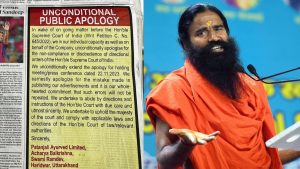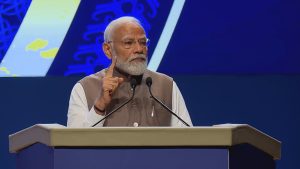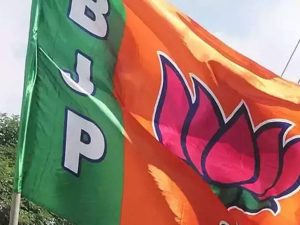ANew Delhi, Aug 05 : Soon after India and Pakistan became separate nation-states, Pakistan attacked India with the help of a bunch of tirbal people backed heavily by its regular Army. Since the princely state of Jammu and Kashmir headed by Maharaja Hari Singh did not have the resources to fight Pakistan Army, he sought India’s help. At that point of time, more than 600 princely states were in the process of getting integrated into India, led by the efforts of then Home Minister Vallabhbhai Patel. The first Prime Minister Jawaharlal Nehru took up the responsibility of trying to integrate Kashmir.
Article 370 of the Indian Constitution, an article that gives special status to the State of Jammu and Kashmir, was offered as a formula of truce in collaboration with Sheikh Abdullah, as Nehru believed the provincial situation could otherwise not be handled. The article is drafted in Part XXI of the Constitution: Temporary, Transitional and Special Provisions. The Constituent Assembly of Jammu and Kashmir, after its establishment, was empowered to recommend the articles of the Indian constitution that should be applied to the state or to abrogate the Article 370 altogether.
The State of Jammu & Kashmir’s original accession, like all other princely states, was on three matters: defence, foreign affairs and communications. All the princely states were invited to send representatives to India’s Constituent Assembly, which was formulating a Constitution for the whole of India. They were also encouraged to set up Constituent Assemblies for their own States.
Most States were unable to set up Assemblies in time, but a few States did, in particular Saurashtra Union, Travancore-Cochin and Mysore. Even though the States Department developed a model constitution for the States, in May 1949, the rulers and chief ministers of all the States met and agreed that separate Constitutions for the States were not necessary. They accepted the Constitution of India as their own Constitution.
The States that did elect Constituent Assemblies suggested a few amendments, which were accepted. The position of all the States (or unions of states) thus became equivalent to that of regular Indian provinces. In particular, this meant that the subjects available for legislation by the central and State governments was uniform across India.
In the case of Jammu and Kashmir, the representatives to the Constituent Assembly requested that only those provisions of the Indian Constitution that corresponded to the original Instrument of Accession should be applied to the State. Accordingly, the Article 370 was incorporated into the Indian Constitution, which stipulated that the other articles of the Constitution that gave powers to the Central Government would be applied to Jammu and Kashmir only with the concurrence of the State’s Constituent Assembly.
This was a temporary provision in that its applicability was intended to last till the formulation and adoption of the State’s Constitution. However, the State’s Constituent Assembly dissolved itself on 25 January 1957 without recommending either abrogation or amendment of Article 370. Thus, the Article was believed to have become a permanent feature of the Indian Constitution on the basis of a technicality, to which the Supreme Court of India and the High Court of Jammu and Kashmir lent further legitimacy.
Why Article 370 is a problem?
It exempted the State from the complete applicability of the Constitution of India. The State was allowed to have its own Constitution.
Central legislative powers over the State were limited, at the time of framing, to the three subjects of defence, foreign affairs and communications.
Other constitutional powers of the Central Government could be extended to the State only with the concurrence of the State Government.
The ‘concurrence’ was only provisional. It had to be ratified by the State’s Constituent Assembly.
The State Government’s authority to give ‘concurrence’ lasted only until the State Constituent Assembly was convened. Once the State Constituent Assembly finalised the scheme of powers and dispersed, no further extension of powers was possible.
Article 370 could be abrogated or amended only upon the recommendation of the State’s Constituent Assembly.






Wow
Thanks Sir